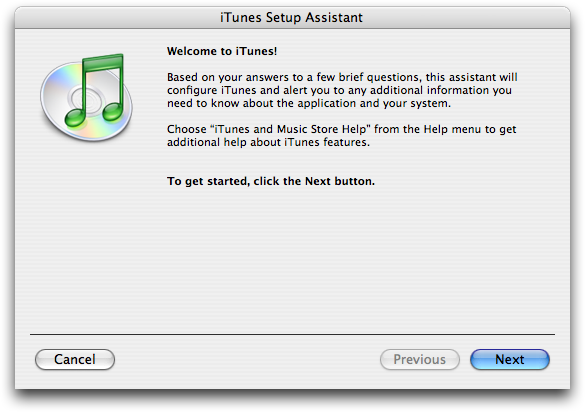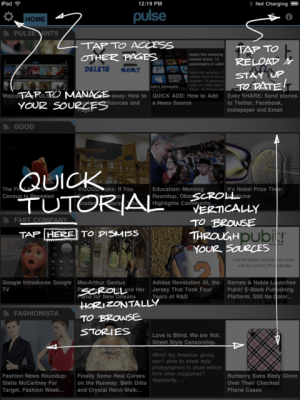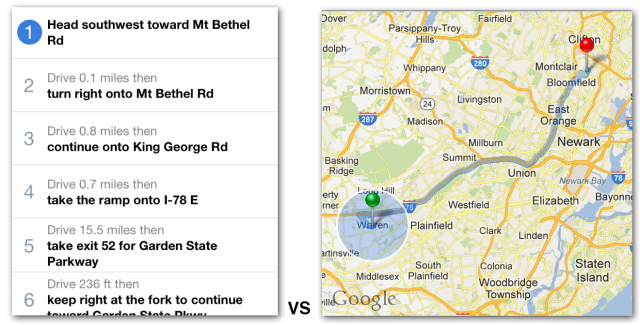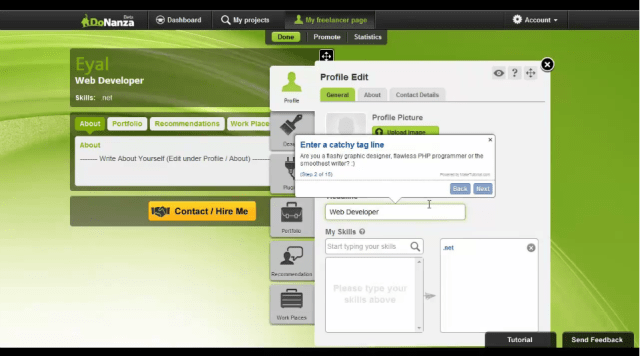Editor’s note: Aaron Travis is vice president of user experience at Citigroup and CEO of PolySuite.com. Follow him on Twitter @attravis.
When starting a new web or mobile app, you may find yourself confronted with an instructional walkthrough illustration or help text indicating how to use it. If you are a technophile who looks at new apps every day, you might quickly dismiss these aids and wonder why designers keep adding these things that just get in the way of using the app.
There are intense debates about this subject, as shown by the article If you see a UI walkthrough, they blew it by Max Rudberg, currently trending on Hacker News, or the follow-up Rethinking The Mobile App Walkthrough by TechCrunch’s Sarah Perez.
Although I’ve been working in UI design for 15 years, I would rather share a personal story about how walkthroughs help a sizable portion of the user population, which just happens to include my wife.
Driving Directions: The Walkthrough Vs. The Map
A few years ago (before smartphones) my wife and I sat down in the car to drive to a wedding. “I printed the directions from Google Maps,” she told me, and handed me a stack of printed pages. “Where is the map view?” I asked, concerned as I flipped through them. “Oh, I only printed the turn-by-turn directions. I never use the maps.” she replied.
Panic immediately set in for me. You see, I always prefer to see the bird’s-eye view of where I’m going. It gives me a more complete understanding of the environment and helps me to navigate better. The idea of blindly going step-by-step through a sequence until arriving at a destination makes me nervous. What if we get off track? Clearly, my wife has the opposite view, finding it easier to follow the directions rather than interpreting a map while driving.
Why are we coming at this task in such radically different ways? The answer lies in the difference between Global and Sequential learning styles. As a global learner, I would rather see all of the streets in the area using the map, at which point I can trace a path to the destination that best suits me. Granted, this takes longer, as I have to stop, process the map, and mentally calculate a route. However, once this process is complete, I feel much more confident while following the route that is mapped in my head. My wife finds no need to go through this process, and feels more comfortable executing the sequence of driving directions without using the map.
The difference between Global and Sequential learning is documented as part of a larger “Index of Learning Styles” [PDF] developed by Drs. Richard Felder and Linda Silverman. In addition to the Global vs. Sequential spectrum of learning, Felder and Silverman also identify the differences between Visual vs. Verbal, Sensory vs. Intuitive, and Active vs. Reflective learners.
The following is a summary of common traits of Sequential and Global learners:
Sequential Learners:
- gain understanding in small sequential, logical steps
- tend to follow logical stepwise paths while problem solving
- may not understand material fully but are still able to solve problems and pass tests
- may know a lot about specific aspects of a subject, but may have trouble relating them to different aspects of same or different subjects
Global Learners:
- seem to learn in large jumps, absorbing material almost randomly without seeing connections, then suddenly “getting it”
- may be able to solve complex problems quickly, or put things together in a novel way once they have grasped the big picture
- strongly global learners may have severe difficulties in solving problems when they have not grasped everything
- may have difficulty in explaining their knowledge
(Are you a Global or Sequential learner? Take this test to find out [PDF].)
Most User Interfaces Service Global Learners, Not Sequential Ones
Graphical user interfaces are inherently built for “Global” thinkers. They consist of interactive elements placed within a layout, which the user must “learn” how to navigate in order to accomplish tasks. Consider the prevailing wisdom from Don Norman, luminary in the usability industry and author of The Design of Everyday Things. In that book, Norman lays out the three parts to a system:
- The designer’s mental model of the system
- The user’s mental model of the system
- The system image (the system itself)
According to Norman, “Often, user errors occur when the designer has failed to render his idea of the system correctly to the user.” In other words, if the user is having problems with an interface, the designers blew it. But is this really the case?
The fact that users must create a “mental model” of a system in order to use it is the same as forcing a driver to use a map in order to figure out how to get to a destination, even if they prefer turn-by-turn directions. If certain drivers would prefer to use turn-by-turn directions instead of the map, does this mean that the map designers blew it? No. It’s merely a preference of sequential vs. global learners.
Helping Sequential Learners
Sequential learners like to be guided through a process, preferably by a live person. However, it is obviously cost-prohibitive to give personal assistance to every user of an app. In its place there are a number of ways to give “Live Assistance” to sequential learners, falling into the Walkthroughs, Artificial Intelligence, and Wizards categories.
 Walkthroughs. This method involves providing instruction screen(s) or delivering step-by-step instructions to guide users through a task. In the latter, each step of the task involves a noticeable alert appearing next to the item requiring interaction. This creates a simulation of a live person “pointing” to each item and giving instructions. For example, after installing Google’s Chrome Browser, Google makes sure to literally “point out” the important functionas of the interface using text bubbles.
Walkthroughs. This method involves providing instruction screen(s) or delivering step-by-step instructions to guide users through a task. In the latter, each step of the task involves a noticeable alert appearing next to the item requiring interaction. This creates a simulation of a live person “pointing” to each item and giving instructions. For example, after installing Google’s Chrome Browser, Google makes sure to literally “point out” the important functionas of the interface using text bubbles.
To simplify the creation of step-by-step walkthroughs for websites and applications, a company called WalkMe offers a method for generating walkthroughs that is easy enough for non-technical administrators to manage.
Artificial Intelligence. With the notoriety of Apple’s new “Siri” personal assistant, artificially intelligent assistants have graduated into the mainstream of public use. This type of technology simulates the presence of a live person and delivers results to the user without the need to interact with a visual UI.
However, Siri has her own dedicated team of developers at Apple who are constantly working on improving her answers. If that’s beyond the capabilities of your company, try a third-party provider like Artificial Solutions, which powers Anna, Ikea’s online assistant.
Wizards. A “Wizard,” also known as a “Setup Assistant” is an interface that takes users through a process one page/step at a time, giving feedback and asking questions along the way in order to simplify multi-step tasks. While this method has been around for some time, it is still an effective way to guide users through a process using progressive disclosure to prevent from overloading them with too many choices at one time.
 Although Wizards are commonly used to set up software and hardware, they can be used anywhere that step-by-step guidance is needed. To create a web-based Wizard, try this starter JavaScript template.
Although Wizards are commonly used to set up software and hardware, they can be used anywhere that step-by-step guidance is needed. To create a web-based Wizard, try this starter JavaScript template.
Conclusion
I return now to the earlier story of driving with my wife to the wedding using turn-by-turn directions. Halfway along the trip, as I had feared, we somehow got off track and had to stop at two separate gas stations for directions, causing us to arrive half an hour late. This demonstrates the inherent weakness of relying on sequential instructions alone. Any sequentially designed system must also account for “wrong turns.”
These days, we never leave home without a GPS system, which can automatically reroute us in case of a missed turn at any time. Thankfully, technology has advanced to the point where we can combine the global learner’s visual map with the sequential learner’s turn-by-turn directions. So where does this leave the “walkthrough argument”? The bottom line is that it takes different methods to satisfy different types of learners. So if you’re a tech-buff annoyed by yet another post-installation walkthrough, just remember that there are other types of drivers on the road with you.



